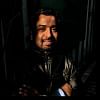
Shamsuddoza Sajen
Shamsuddoza Sajen is a journalist and researcher. He can be contacted at [email protected]
Shamsuddoza Sajen is a journalist and researcher. He can be contacted at [email protected]
Beyond Dhaka, protesters hold the streets with equal resolve
Even on a holiday, the quota reform protests show no sign of slowing. Students across Bangladesh take to the streets, block roads, form human chains, and voice their rejection of the reinstated quota system in government jobs.
Defying the rain, they sat on the streets, waving banners and shouting slogans
The student movement against the reinstatement of the quota system in public service recruitment escalated on July 3, 2024, as demonstrations expanded beyond university campuses to major highways and key city intersections, mounting pressure on the government.
Defying rain, warnings, exhaustion, anti-quota protests gained momentum
Though protests had already begun in response to a High Court verdict reinstating quotas in government jobs, it was on July 1, 2024, that the movement for reforms to the quota system truly took shape.
On March 31, 1971, Indian Prime Minister Indira Gandhi moved a resolution in parliament strongly criticising the military action in Bangladesh.
At 4:00am on March 30, 1971, Bangladeshi forces, comprising East Pakistan Rifles (EPR), police and civilians under the leadership of Abu Osman Chowdhury, then a major and commander of the fourth wing of EPR, attacked the Pakistan occupation army in Kushtia from three sides.
American Consul General Archer K Blood in a situation report submitted on March 27, 1971, wrote that according to numerous accounts, including eye witness reports, the Pak military crackdown on Bangalee nationalists has been carried out throughout Dacca swiftly, efficiently (despite heavy resistance from some quarters, including pro-Awami League police and East Pak Rifles), and often with ruthless brutality.
Bangabandhu Sheikh Mujibur Rahman in a press statement issued today, called for a general strike throughout Bangladesh on March 27 against the army’s action in certain places in East Pakistan including Saidpur, Rangpur and Joydevpur.
There was a final meeting between Awami League’s team and Yahya’s advisers on March 24, 1971, at 6:00pm.
The representatives of president Yahya Khan and an Awami League team met twice today.
On the morning of March 22, 1971, Bangabandhu called on Yahya. Bhutto was also present at the meeting.
In an unscheduled meeting, Yahya told Mujib and Tajuddin that Bhutto had been informed that the representatives of Awami League and the government reached an agreement on the formation of the central cabinet and that Bhutto should be present for the discussion on the interim constitutional instrument and cabinet formation.
The fourth round of talks between Yahya and Mujib was held.
Curfew was imposed this evening in Joydevpur town following a clash between the local people and army personnel, resulting in the death of at least three people.
On the morning of March 18, 1971, Major General Khadim Hussain Raja, the then general officer commanding of the 14th division in East Pakistan, and Major General Rao Farman Ali, the then military adviser to the governor of East Pakistan, assembled at the former’s office to work on the plan for military action -- the infamous Operation Searchlight.
On the morning of March 17, Mujib-Yahya talks resumed. It was Sheikh Mujib’s 51st birthday.